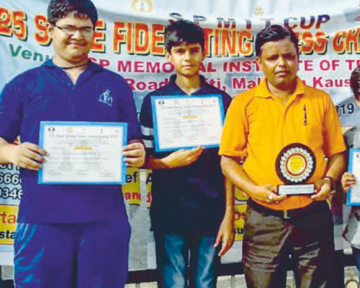
The earliest precursor of modern chess is a game called chaturanga, which flourished in India by the 6th century, and is the earliest known game to have two essential features found in all later chess variations—different pieces having different powers (which was not the case with checkers and Go), and victory depending on the fate of one piece, the king of modern chess.A common theory is that India's development of the board, and chess, was likely due to India's mathematical enlightenment involving the creation of the number zero.Other game pieces (speculatively called "chess pieces") uncovered in archaeological findings are considered as coming from other, distantly related board games, which may have had boards of 100 squares or more.
Chess was designed for an ashtāpada (Sanskrit for "having eight feet", i.e. an 8×8 squared board), which may have been used earlier for a backgammon-type race game (perhaps related to a dice-driven race game still played in south India where the track starts at the middle of a side and spirals into the center).Ashtāpada, the uncheckered 8×8 board served as the main board for playing chaturanga.Other Indian boards included the 10×10 Dasapada and the 9×9 Saturankam.Traditional Indian chessboards often have X markings on some or all of squares a1 a4 a5 a8 d1 d4 d5 d8 e1 e4 e5 e8 h1 h4 h5 h8: these may have been "safe squares" where capturing was not allowed in a dice-driven backgammon-type race game played on the ashtāpada before chess was invented.
The Cox-Forbes theory, proposed in the late 18th century by Hiram Cox, and later developed by Duncan Forbes, asserted that the four-handed game chaturaji was the original form of chaturanga.The theory is no longer considered tenable.
In Sanskrit, "chaturanga" (चतुरङ्ग) literally means "having four limbs (or parts)" and in epic poetry often means "army" (the four parts are elephants, chariots, horsemen, foot soldiers).The name came from a battle formation mentioned in the Indian epic Mahabharata.The game chaturanga was a battle-simulation game which rendered Indian military strategy of the time.